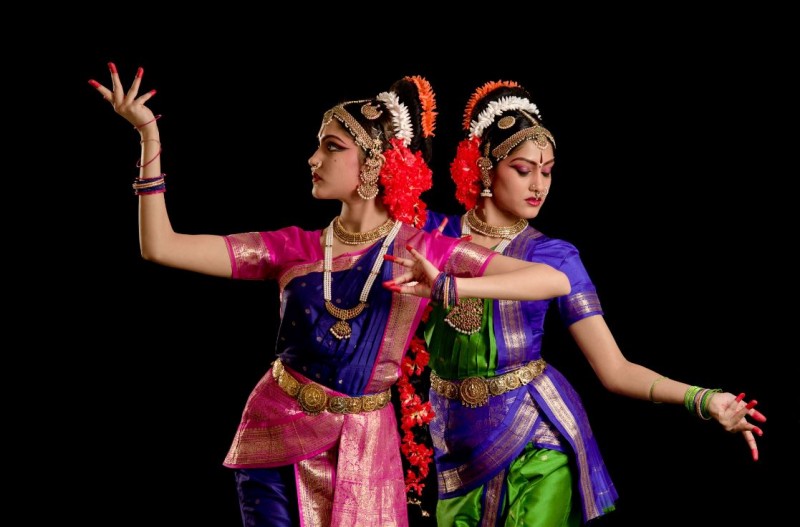
Indian classical music and dance forms are a rich and vibrant part of India's cultural heritage. They have evolved over centuries, embodying the essence of Indian traditions, spirituality, and aesthetics. With their intricate rhythms, melodic nuances, and graceful movements, Indian classical music and dance offer a mesmerizing experience that connects the performer and the audience on a profound level. In this article, we will explore the diverse genres, characteristics, and significance of Indian classical music and dance forms.
1. Introduction to Indian Classical Music and Dance
Indian classical music and dance are rooted in ancient traditions and have been nurtured by generations of practitioners. These art forms are deeply intertwined, with music often accompanying dance performances. Indian classical music encompasses a vast repertoire of ragas (melodic scales) and talas (rhythmic patterns), while classical dance forms express intricate stories and emotions through graceful movements.
2. Origins and Historical Background
The origins of Indian classical music and dance can be traced back to the ancient scriptures and texts, such as the Vedas and the Natyashastra. These art forms flourished in the courts of kings and emperors, where musicians and dancers received patronage and recognition. Over time, various regional styles and techniques emerged, giving rise to diverse classical music and dance traditions across India.
3. Indian Classical Music: A Melodic Journey
3.1 Hindustani Classical Music
Hindustani classical music, predominantly practiced in northern India, is characterized by its improvisational nature and emotive appeal. It is based on a system of ragas and utilizes instruments like the sitar, tabla, and sarod. Hindustani music has a rich repertoire of compositions ranging from soul-stirring melodies to rhythmic compositions known as taans.
3.2 Carnatic Classical Music
Carnatic classical music, primarily practiced in southern India, is known for its highly structured approach and emphasis on precise techniques. It follows a well-defined framework of ragas and talas and utilizes instruments such as the veena, mridangam, and violin. Carnatic music features complex rhythmic patterns and intricate compositions, highlighting the virtuosity of the performer.
4. Indian Classical Dance: Poetry in Motion
4.1 Bharatanatyam
Bharatanatyam, originating from the southern state of Tamil Nadu, is one of the oldest and most widely practiced classical dance forms in India. It combines precise footwork, facial expressions, and hand gestures to depict mythological stories and devotional themes. Bharatanatyam showcases both nritta (pure dance) and abhinaya (expressive dance) elements, captivating audiences with its elegance and grace.
4.2 Kathak
Kathak, originating from northern India, is a dynamic dance form that blends elements of storytelling, rhythmic footwork, and graceful movements. It evolved in the Mughal courts and incorporates both Hindu and Persian influences. Kathak features intricate spins, intricate footwork patterns, and expressive gestures, allowing the dancer to portray a range of emotions and narratives.
4.3 Odissi
Odissi, originating from the state of Odisha, is a graceful and lyrical classical dance form. It draws inspiration from temple sculptures and mythological stories. Odissi is characterized by fluid movements, delicate hand gestures, and sculpturesque poses. The dance form emphasizes the tribhangi posture, where the body is gracefully curved at three places, creating a captivating visual effect.
4.4 Kathakali
Kathakali, from the southern state of Kerala, is a highly stylized dance-drama that combines dance, music, and elaborate costumes. It features elaborate makeup, vibrant costumes, and exaggerated facial expressions. Kathakali performances depict stories from Hindu epics, and the dancers use elaborate hand gestures and eye movements to convey emotions and characters.
4.5 Manipuri
Manipuri, from the northeastern state of Manipur, is a gentle and lyrical dance form that reflects the region's cultural heritage. It combines graceful movements, delicate hand gestures, and devotional themes. Manipuri dance is known for its circular movements, fluid footwork, and use of traditional musical instruments like pung (drum) and pena (flute).
4.6 Kuchipudi
Kuchipudi, originating from the southern state of Andhra Pradesh, is a vibrant dance form that blends dance, music, and acting. It showcases a combination of pure dance, expressive storytelling, and comic interludes. Kuchipudi dancers exhibit impressive footwork, quicksilver movements, and a wide range of facial expressions, captivating the audience with their dynamic performances.
5. Similarities and Differences between Indian Classical Music and Dance
While both Indian classical music and dance are expressions of art, they differ in their mediums of communication. Music relies on the intricate interplay of melodies, rhythms, and notes, whereas dance utilizes body movements, gestures, and facial expressions to convey emotions and narratives. However, both forms share a deep-rooted connection and often complement each other during performances.
6. Cultural Significance and Spiritual Dimensions
Indian classical music and dance hold immense cultural and spiritual significance in Indian society. They serve as a means of spiritual expression, devotion, and storytelling. These art forms have been integral to various religious and cultural practices, festivals, and rituals, enriching the lives of both performers and audiences.
7. Preservation and Modern Innovations
Efforts are being made to preserve and promote Indian classical music and dance forms. Institutions, gurus, and academies play a crucial role in imparting training and preserving the rich traditions. Additionally, contemporary artists are incorporating modern elements and collaborations to make these art forms more accessible and relevant to today's audiences.
8. Conclusion
Indian classical music and dance forms are a treasure trove of artistic expression and cultural heritage. They continue to captivate audiences worldwide with their aesthetic appeal and timeless beauty. Whether it's the soul-stirring melodies of classical music or the enchanting grace of classical dance, these art forms serve as a window into the rich tapestry of Indian culture, spirituality, and artistic excellence.
Indian television shows and soap operas
Rain continues to batter Himachal; CM issues helpline numbers
Bollywood Film Industry: Unveiling the Magic of Indian Cinema